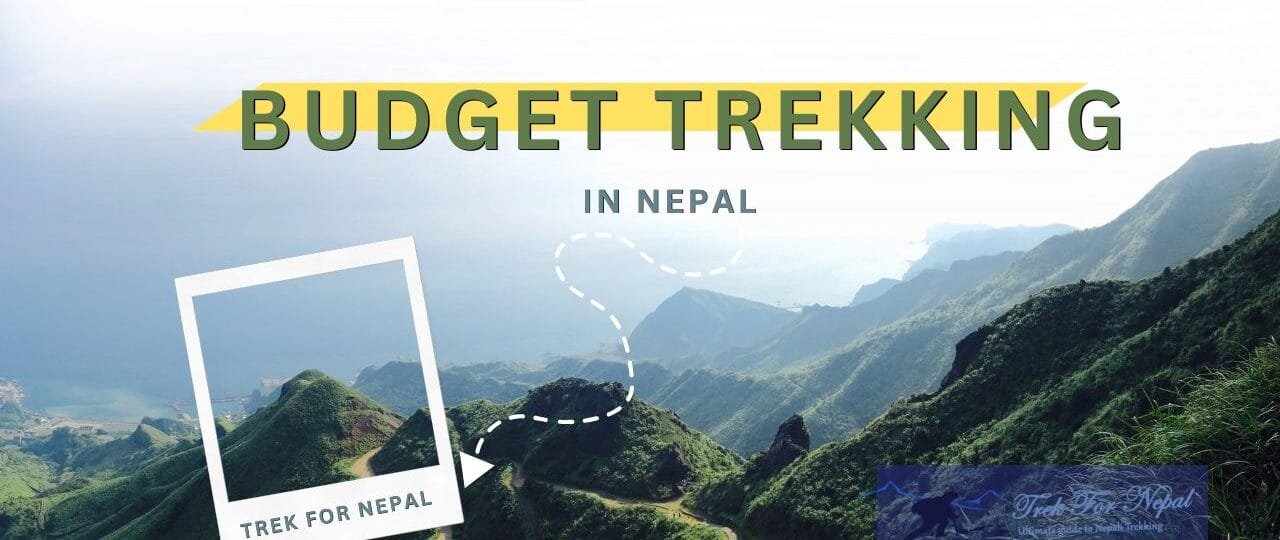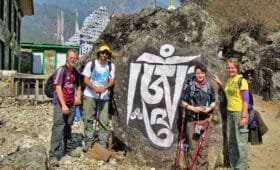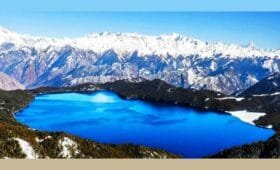Are you dreaming of trekking in Nepal but worried about the cost? Don’t worry! Nepal is one of the most budget-friendly trekking destinations in the world. With stunning landscapes, warm hospitality, and culturally rich experiences, trekking in the Himalayas doesn’t have to break the bank. Whether you’re a seasoned backpacker or a first-time trekker on a tight budget, there are plenty of ways to save money and enjoy an unforgettable adventure.
This comprehensive guide will take you through practical tips, budget-friendly trekking routes, and cost-saving strategies so you can explore the beauty of Nepal affordably.
Why Choose Budget Trekking in Nepal?
Nepal is the ultimate destination for trekkers of all kinds, from budget travellers to luxury adventurers. But what makes it stand out for budget trekking?
- Affordable Accommodation: Nepal offers countless tea houses and budget lodges, costing as low as $5 per night.
- Cheap Food Options: Local Nepali dishes like dal bhat are hearty, delicious, and budget-friendly.
- Variety of Routes: From popular treks to off-the-beaten-path trails, Nepal offers options for every budget.
Let’s dive into how you can trek in Nepal on a budget while making the most of your adventure.
1. Pick Budget-Friendly Trekking Routes
Choosing the right trekking route is crucial when it comes to budget trekking in Nepal. Some trails are more affordable due to their accessibility, lower permit fees, and cheaper accommodations.
Top Budget Trekking Routes in Nepal:
Ghorepani Poon Hill Trek
- Duration: 4-5 days
- Highlights: Panoramic views of Annapurna and Dhaulagiri ranges.
- Why it’s budget-friendly: Short trek with affordable tea houses and lower permit costs.
Langtang Valley Trek
- Duration: 7-10 days
- Highlights: Beautiful valley landscapes and Tibetan-influenced culture.
- Why it’s budget-friendly: Less crowded and cheaper than Everest or Annapurna routes.
Annapurna Base Camp (ABC) Trek
- Duration: 7-11 days
- Highlights: Stunning mountain vistas and diverse terrain.
- Why it’s budget-friendly: Moderate duration with plentiful budget lodging options.
Manaslu Circuit Trek
- Duration: 14-18 days
- Highlights: Remote trails and breathtaking Himalayan views.
- Why it’s budget-friendly: Offers great value for its incredible scenery compared to pricier treks.
💡 Tip: Research permits and transportation costs for each route to further optimize your budget.
2. Travel During the Off-Season
Trekking in Nepal during the off-season is a fantastic way to save money. The off-seasons are typically during winter (December-February) and monsoon (June-August).
Benefits of Off-Season Trekking:
- Lower Prices: Tea houses, guides, and porters often reduce their rates during these times.
- Fewer Crowds: Trails are quieter, allowing you to enjoy a more personal experience.
- Flexible Deals: Bargaining is easier, and discounts are more common.
💡 Note: While winter offers clear skies and fewer crowds, be prepared for colder temperatures. During the monsoon, some trails may be muddy or inaccessible.
3. Opt for Budget Lodging
Nepal’s famous tea houses are the backbone of budget trekking. These are simple lodges offering basic accommodations and meals, making them perfect for budget travellers.
Tips for Affordable Stays:
- Stay in Tea Houses: These typically cost $5-$10 per night.
- Bundle Meals and Stays: Many tea houses offer discounted packages for meals and lodging.
- Stay in Kathmandu or Pokhara Pre-Trek: Both cities have plenty of budget hostels and guesthouses for under $15 per night.
💡 Pro Tip: Always carry small change in Nepali rupees for easy transactions.
4. Use Local Guides and Porters
Hiring a guide or porter locally can enhance your experience without adding too much to your budget. Local guides are knowledgeable about the trails and culture, while porters make your trek easier by carrying your gear.
How to Save with Local Help:
- Hire Locally: Hiring guides or porters in Kathmandu or Pokhara is cheaper than booking through international agencies.
- Share Costs: If you’re trekking with a group, share the cost of guides or porters.
- Negotiate Prices: Don’t hesitate to discuss and agree on a fair price before starting your trek.
💡 Tip: Be respectful when negotiating; remember, these professionals depend on tourism for their livelihood.
5. Bring Your Gear
Gear rentals in Nepal can be expensive, especially for longer treks. Bringing your essentials can save money and ensure you’re using high-quality equipment.
Must-Have Trekking Gear:
- Trekking Shoes: Comfortable, waterproof, and durable.
- Sleeping Bag: For colder nights in tea houses.
- Reusable Water Bottles and Purification Tablets: Saves money and reduces plastic waste.
💡 Pro Tip: If you can’t bring your gear, rent or buy second-hand items in Kathmandu or Pokhara at affordable rates.
6. Plan Meals Strategically
Food costs can add up quickly while trekking, but there are ways to save without compromising on energy or nutrition.
Food Budgeting Tips:
- Eat Local: Stick to Nepali dishes like dal bhat, which are filling and affordable.
- Avoid Snacks on the Trail: Bring your snacks like nuts, dried fruit, or granola bars from the city.
- Drink Tap Water (Filtered): Use purification tablets or a water filter instead of buying bottled water.
💡 Fun Fact: “Dal bhat power, 24-hour” is a popular saying among trekkers because it’s a nutritious and energy-packed meal.
7. Trek Independently or Join Budget Groups
If you’re an experienced trekker, going independently can be a great way to save. Alternatively, join a budget group trek where costs for guides, accommodation, and permits are shared.
Why Consider Independent or Group Trekking?
- Independent Trekking: Greater control over expenses and flexibility with your schedule.
- Group Trekking: Lower shared costs and the opportunity to meet fellow travellers.
💡 Caution: Some restricted areas like Upper Mustang or Manaslu require a guide or permit, so plan accordingly.
Conclusion
Budget trekking in Nepal is not only possible but also incredibly rewarding. With careful planning, smart decisions, and a sense of adventure, you can explore the majestic Himalayas without overspending. From choosing affordable trekking routes to staying in tea houses and travelling during the off-season, there are countless ways to keep your costs low while making unforgettable memories.
So pack your bags, lace up your trekking boots, and get ready to embark on a budget-friendly adventure in one of the world’s most stunning trekking destinations. Happy trekking!
FAQs
1. How much does budget trekking in Nepal cost?
On average, you can trek in Nepal for $20-$40 per day, covering accommodation, food, and basic guide services.
2. What are the most affordable trekking routes?
Some of the cheapest treks include Ghorepani Poon Hill, Langtang Valley, and Annapurna Base Camp.
3. Can I trek independently in Nepal?
Yes, independent trekking is allowed on most routes, but restricted areas may require a guide and special permits.
4. How can I save on food costs while trekking?
Stick to local dishes, avoid expensive snacks, and bring your high-energy snacks from the city.
5. What gear should I bring for budget trekking?
Essential gear includes trekking shoes, a sleeping bag, a reusable water bottle, and warm clothing.




